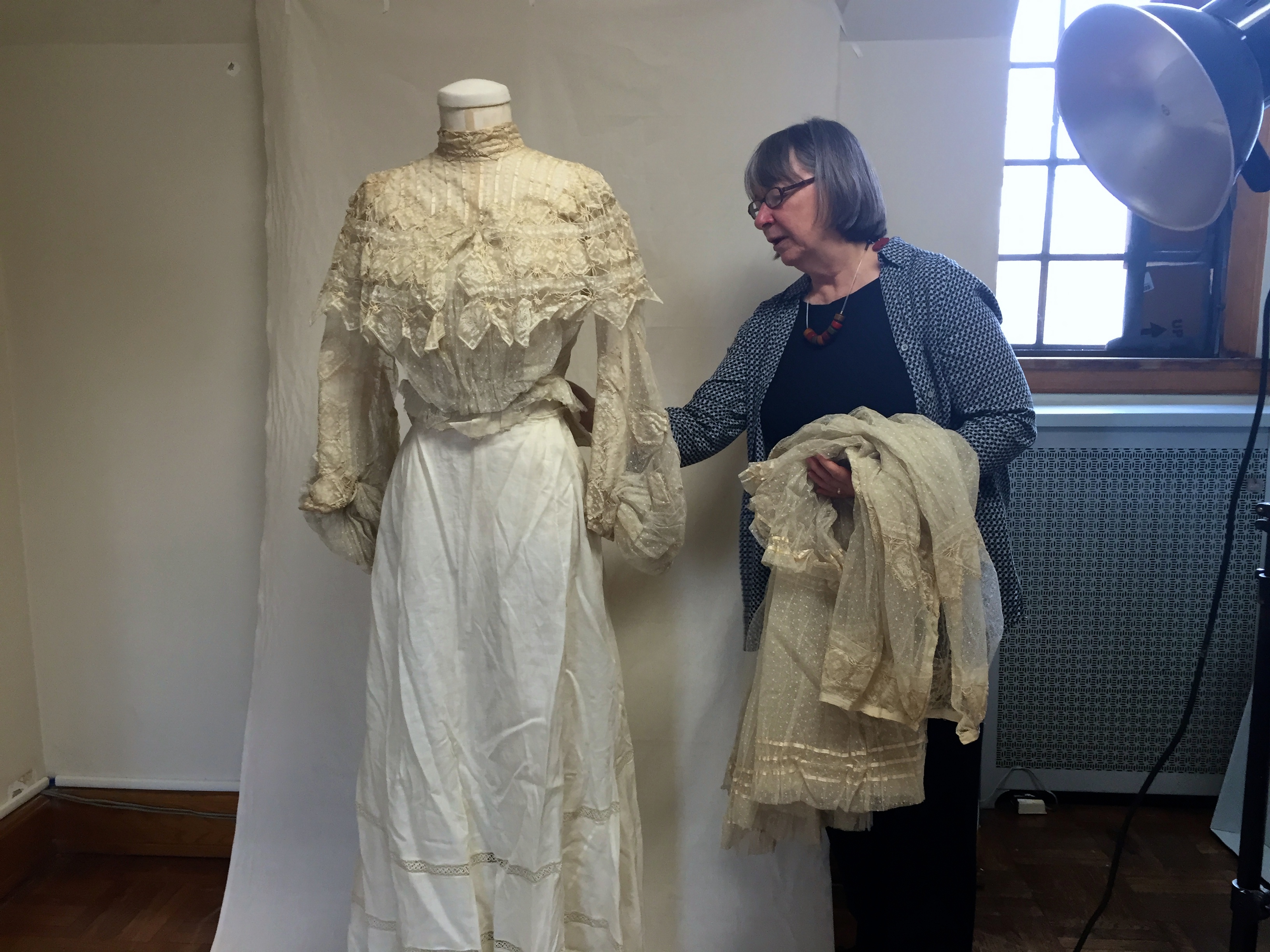
By Melissa Rohman
Rummaging through large boxes of donated clothing is all in a day’s work for apparel professor Susan Strawn, who is currently documenting and photographing a clothing collection dating back to the 1850s.
Strawn has wanted to archive the existing collection, which has grown to about 300 pieces, for years. She said: “Clothing is a language of its own. It’s a visual linguistic, and every piece exists for a reason.”
Strawn’s work will make it easy for Dominican students and faculty across disciplines to study and use the clothing items.
Strawn started archiving the clothing in February and hopes to finish before she retires in May. Strawn said she is more than happy to donate her time to the effort. She said, “The experience of looking closely at an object and seeing what you can learn from it is an enlightening and humbling experience.”
The collection started years ago when professor Rita Sisko began taking donations and clothing from museums. Other fashion professors continued adding to the collection. Some pieces came from museum and university collections, while university alumni have donated other pieces. The collection is named after Professor Emerita Sr. Diona McNichols, who taught a history of costume class at Dominican.
According to its mission statement, the purpose of the Sr. Diona McNichols’ Costume Collection is to “document, preserve, and make available to students and scholars across disciplines a repository of historically significant apparel artifacts.” Strawn is also using the documented pieces to conduct a conservation project in her History of Dress class. She said, “this collection will be a valuable teaching resource.”
Students enrolled in this class are studying two pieces they chose from the collection. Senior Lauren Miller, an apparel merchandising major, is currently working with 1940s black satin peep-toe heel house slippers designed by Daniel Green. Miller said: “I really like working with the school’s collection of older garments and accessories. The garments can give all of us a glimpse into what was popular during that time.” Using the shoes to study the dress of the time, Miller learned about war time fashion, when “families were wasting nothing.”
Strawn said when the collection is fully documented and photographed, an online record of each documented piece with a photo and description will most likely be saved on the University’s S drive as well as burned onto CDs for future use.
